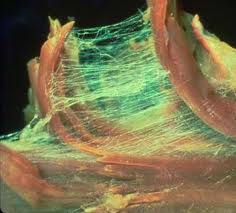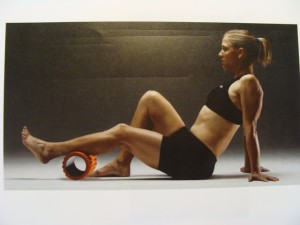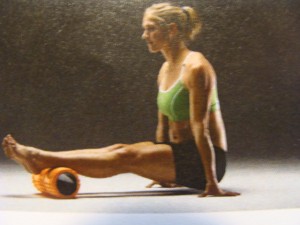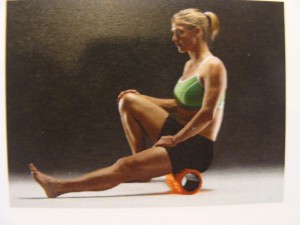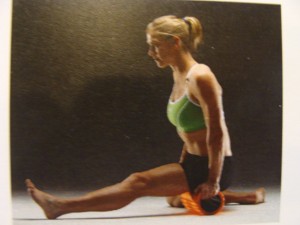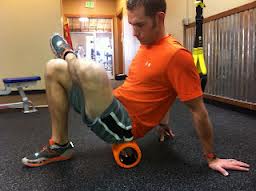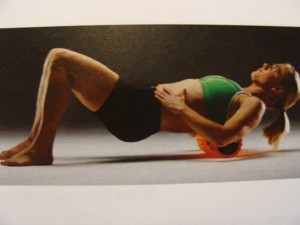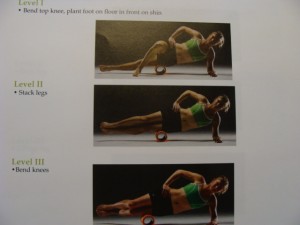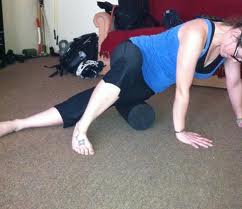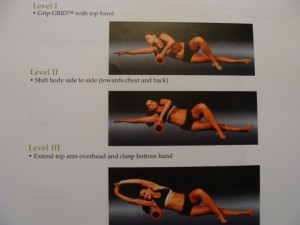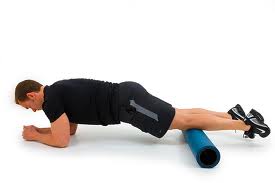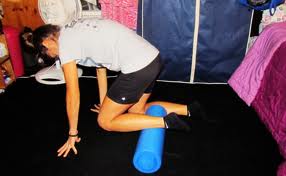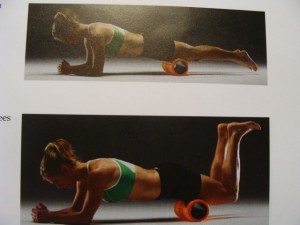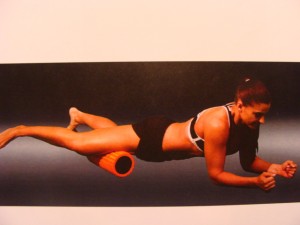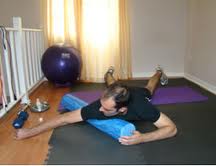The Myofascia
1. What is It
Fascia or myofascia is the dense, tough tissue which surrounds and covers all of your muscles and bones. This outer fascial covering is very strong and very flexible. In fact, it has a tensile strength of over 2000 pounds.
Under a microscope, myofascia resembles a spider web or fish net. It is very organized and very flexible in a healthy state.
Myofascia can best be described as a complete body suit which runs from the top of your head down to the bottom of your toes. It is continuous, has no beginning or end and can be found almost everywhere in your body. Like yarn in a sweater the entire body is connected to every other part of the body by the fascia. It is a continuous weave of material. And, like a pull in a sweater, damage to an area of fascia can affect other distant areas in your body even years later.
2. Why the Myofascia Is Important for your Health
In the normal healthy state the fascia is relaxed and soft. It has the ability to stretch and move without restriction. When you experience physical trauma or inflammation the fascia loses its pliability. It can become tight, restricted and a source of tension throughout the rest of the body and a number of health related problems can result;
- Headaches
- Generalized Muscle pain and spasms
- Chronic back and neck pain
- Re-aggravation of previous injuries
- Sciatica and the sensations such as numbness and pins and needles
- Restrictive Breathing
- Poor posture and reduced flexibility
Things that can cause this once flexible tissue to become too tight are:
- Inflammation
- Traumas, such as a falls, sport or work injuries or car accident
- Poor posture
- Lack of stretching
- Prolonged sitting or standing
- Emotional/psychological stress
- Repetitive motions, such as factory work or keyboarding
3. Treating the Myofascia
Myofascial Release ( Self-Massage)
Myofascial Release is an effective therapy that can effectively treat tough, tight myofascial tissue and improve its health by making it more relaxed, pliable and soft.
Myofascial Release is applied directly on the body and uses slow deep pressure to restore the proper health of the fascia. The pressure should never be beyond your tolerance and you may experience a slight tingling or burning sensation in the skin, which is perfectly normal and safe.
The purpose of Myofascial Release techniques is to help to relax and lengthen tight myofascial tissue. Since the myofasica is interconnected throughout the body treating or relaxing one area of the body may have positive affects in another area. For example, relaxing the myofascia in the hips and low back may help reduce tension in the neck and shoulders which in turn may have been causing shoulder and neck restriction and headaches.
SMRT-Core Self-Myofascial Release
This is the process of using the SMRT-Core Grid to massage targeted muscles and fascia to improve soft tissue elasticity. Other benefits of self-myofascial release include;
- Removal of waste by-products (via blood) to facilitate tissue recovery and repair.
- Increase neural stimulation
- Increase range of motion
- Improve proper contraction of muscle tissue
SMRT-Core Grid
Guidelines for Safe Effective Use of the Grid
1. Discomfort – Mild to moderate discomfort is common when beginning self-myofascial release. Discomfort will decrease over time as normal length-tension relationship is restored.
2. Control of Grid – It is important to maintain an adequate amount of pressure on the grid so the grid will not shift during the massage movement.
3. Grid Placement – AVOID grid placement on;
– bony structures
-the neck
– joints
– inside the upper arm
-any bruised areas of the body
4. Breathing – Connect the breath to each movement and focus on complete inhales and exhales
5. Proper body positioning and technique – for maximum effectiveness the grid must be positioned as illustrated and movement must occur as described.
Contraindications for use of the Grid
- Large bruises
- Phlebitis
- Severe varicose veins
- Open wounds
- Undiagnosed lumps
- Skin infections
- Diabetes
- Cancer of the bones
- Pregnancy – lower back and adductor regions
General rule – never us the grid over joints or bony prominences or inside of the upper arms
SMRT-Core Self Myofascial Release Positions
Overview;
Supine (face up);
1. Calf
2. Hamstring
3. High Hamstring
4. Glutes
5. Piriformis
6. Mid to upper back
Side Lying;
7. Side plank – Peroneals
8. Angled Side Plank – IT band and Vastus Lateralis
9. Tensor Fascia Lata (lateral Hip)
10. Latissimus Dorsi
Prone (face down);
11. Anterior/Lateral Shin – Anterior Tibialis
12. Quadriceps
13. Adductors- Groins and Vastus Medialis
14. Pectorials
Key points:
1. Never us the grid over joints or bony prominences or inside of the upper arms.
2. All movements (rolling) are done slowly with gentle to deep pressure for a count of 10.
3. Focus on deep controlled breathing which is in rhythm with your rolling.
3. If you find a sensitive spot you may apply pressure with the grid over this spot for 10 to 30 sec.
4. Correct posture and positioning of the grid is necessary for effective results.
5. It will take practice to learn how to perform each movement correctly.
Supine (face up) Position
Side Lying Position
Prone (Face Down) Position
If you’d like more info please contact Mike.

